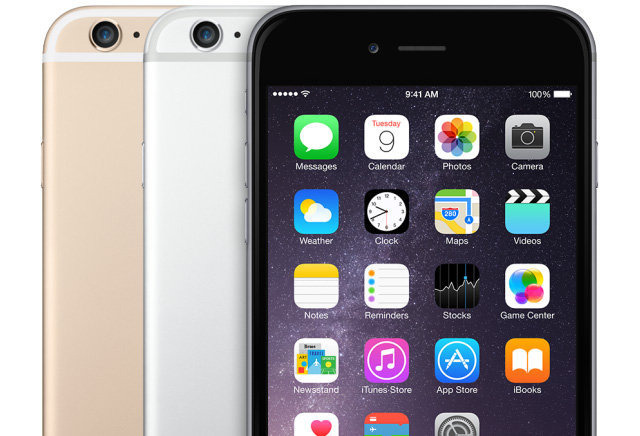As investors await this fall's anticipated "iPhone 7" launch, sales for the current-flagship iPhone 6s series are expected to continue to lag behind last year, with Wall Street estimates pegged at about 40 million units for the just-concluded June quarter.
Analyst Amit Daryanani of RBC Capital Markets has forecast sales to be even lower than market consensus, calling this week in a research note provided to AppleInsider for Apple to have shipped 39.5 million iPhones in the three-month period. Those numbers would be down from the 47.5 million Apple sold in the June 2015 quarter, marking the second-ever year-over-year decline in iPhone sales.
This year's iPhone 6s series has been dogged by tough comparisons to the iPhone 6 cycle, where pent-up consumer demand for a new form design and larger form factors led to astronomical growth. But with largely the same design and form factor, accompanied by a maturing smartphone market, the iPhone 6s series couldn't keep pace, marking the first time ever that iPhone sales have seen a decline.
Daryanani believes Apple's revenue in the June quarter will be at $42.1 billion, down from $49.6 billion a year ago. He also predicts earnings per share of $1.39. Those numbers are roughly in line with Wall Street estimates of $42.2 billion in revenue and $1.40 earnings per share.
In particular, Daryanani believes that the average selling price of the iPhone may also be dropping ahead of the anticipated "iPhone 7" launch in September. Demand for the low-cost iPhone SE continues tout outstrip supply, and the analyst predicts that the average price may drop to $633 this year.
Looking forward to the September 2016 quarter, RBC forecasts $47.3 billion in revenue and $1.77 earnings per share, compared to Wall Street averages of $46.2 billion in revenue and $1.63 earnings per share. RBC believes iPhone shipments will reach 44 million next quarter.
RBC Capital Markets has maintained an "outperform" rating for AAPL stock with a price target of $115. The firm told investors this week it believes stock will remain "stable to modestly higher" in the short-term.
 Neil Hughes
Neil Hughes







-m.jpg)






 Malcolm Owen
Malcolm Owen
 William Gallagher
William Gallagher
 Andrew O'Hara
Andrew O'Hara

 Sponsored Content
Sponsored Content
 Charles Martin
Charles Martin










6 Comments
I just want to say good luck. We're all counting on you.
Those are all good reasons for sales to decline year over year. Too bad they aren't the correct reasons.
Why is it that bloggers can't get their heads around the simple fact that sales of the iPhone in the US are doing just fine. That sales of the iPhone in all other markets are down 8% to 10%? And aren't bloggers examining the reasons for that? Could it be too hard for their non-financial minds?
Apple has repeatedly stated in its quarterly earnings conference calls that it is struggling with adverse FX headwinds that have forced it to raise prices in foreign markets to protect its US$ based financials
For those that still don't get it, the value of the US$ has risen about 25% against foreign currencies since late 2014, hitting its peak in late 2015. This is due to the US's growing (albeit slowly) GDP, very low inflation rate and declining unemployment rate, all signs of a strong economy. This contrasts with what is going on in the EU, Greater China and South America, so much so that economists are fearful of a worldwide recession in 2017.
Pay attention to the iPhone's ASP reported during July's earnings report. A significant drop there will be a clear sign that sales of the iPhone SE is doing very well, meaning that PRICE in slowing economies is the prime driver of iPhone sales, and not form factor, design changes or market saturation boogie men.
Each successive generation of iPhone has improved to the point where the two year upgrade cycle is no longer the norm. My iPhone 6+ is as awesome today as it was the day I bought it. It'll be staying with me for another year at least. Maybe if they put the power/sleep button back where it belongs I may reconsider...